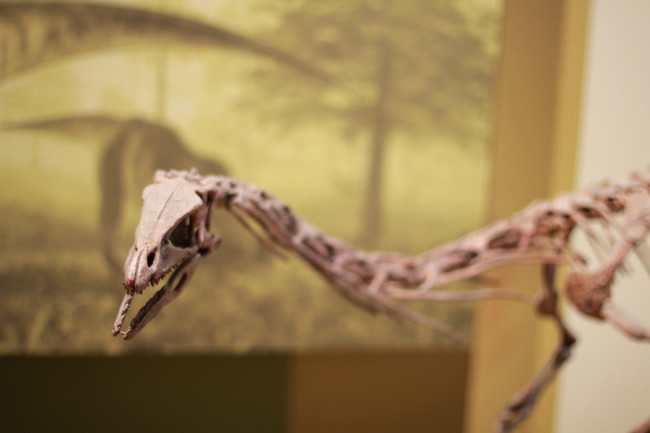
When people walk into the newest temporary exhibit at the Perot Museum of Nature and Science, they may need to take a few steps back.
Towering over visitors at the entrance is a recreation of the world’s largest known dinosaur, the Argentinosaurus.
Only one of the many enormous creatures in “The World’s Largest Dinosaurs” exhibit, the Argentinosaurus is a sauropod, a giant plant-eating dinosaur group the roamed the earth over 95 million years ago.
Familiar to most in their pop culture form in “Land Before Time,” sauropods, like the series’ Little Foot, loom feet in the air above museum patrons.
In true Perot fashion, the museum’s exhibit features plenty of opportunities to play and touch different sauropod parts, like thighbones, teeth and vertebrae.
Tactile learners, young and old, will have plenty to explore while the wealth of information about the ancient dinosaurs’ biology, habit and, most importantly, size, can be found on every corner of the exhibit’s room.
Organized by the American Muesum of Natural History in New York, the exhibit stars one mammoth Mamenchisaurus, which spans 60 feet, 30 of which are contained in the neck alone.
Projecting interior anatomy on the side of the female dinosaur, which was recreated by scientists who studied fossilized bones and the interior of modern dinosaur relatives, allows visitors to watch the Mamenchisaurus breath, beat its heart and digest food.
A to-scale replica of the respiratory system alongside the life-size dinosaur shows the bird and reptile like qualities of the sauropods.
For aspiring archaeologists, the exhibit ends in a mock dig, where visitors can grab tools and get to work in an elevated sand pit, searching for dinosaur fossils.
The exhibit closes September 1 and can be paired with a ticket to see “Giants of Patagonia,” a 3-D film that shows viewers the immense size and strength of sauropods, many of whom were found in Argentina.
“The World’s Largest Dinosaurs” costs $21 and includes admission to the museum’s general exhibit halls.













